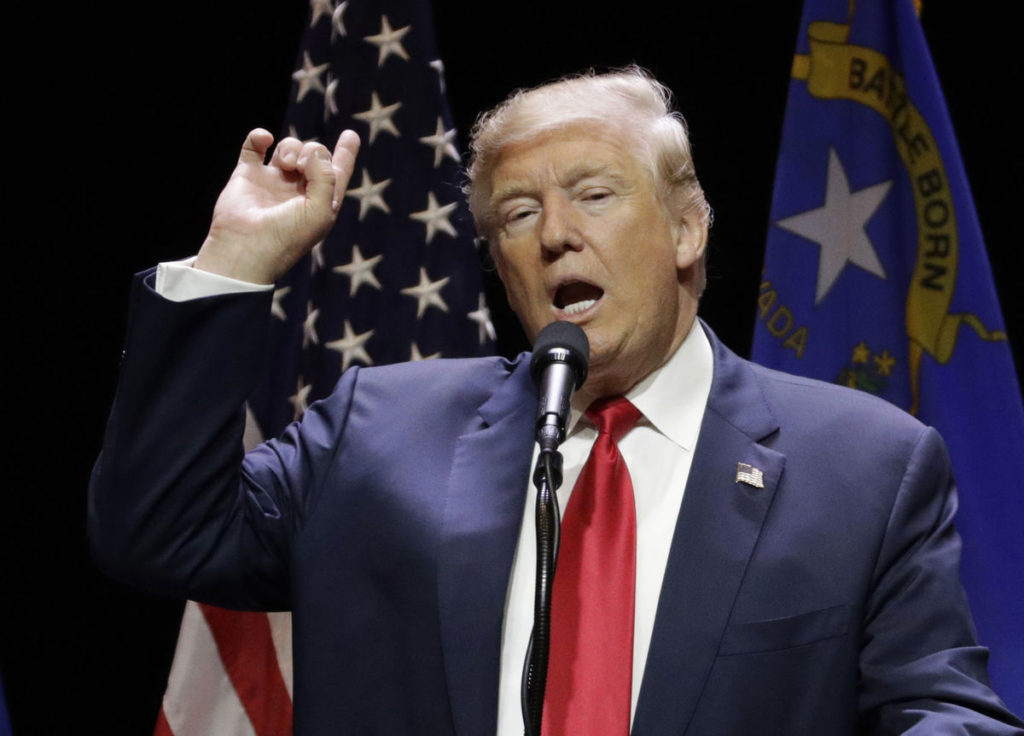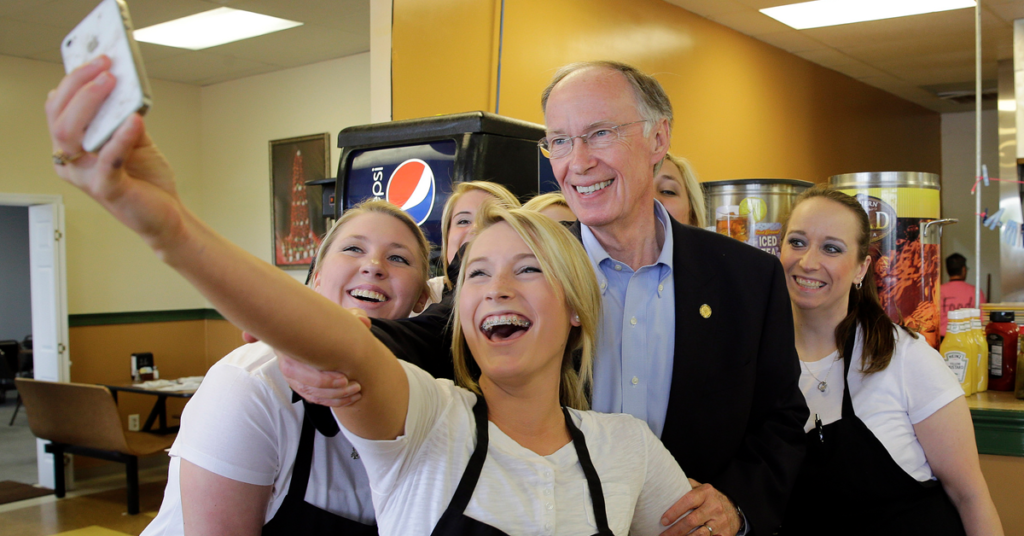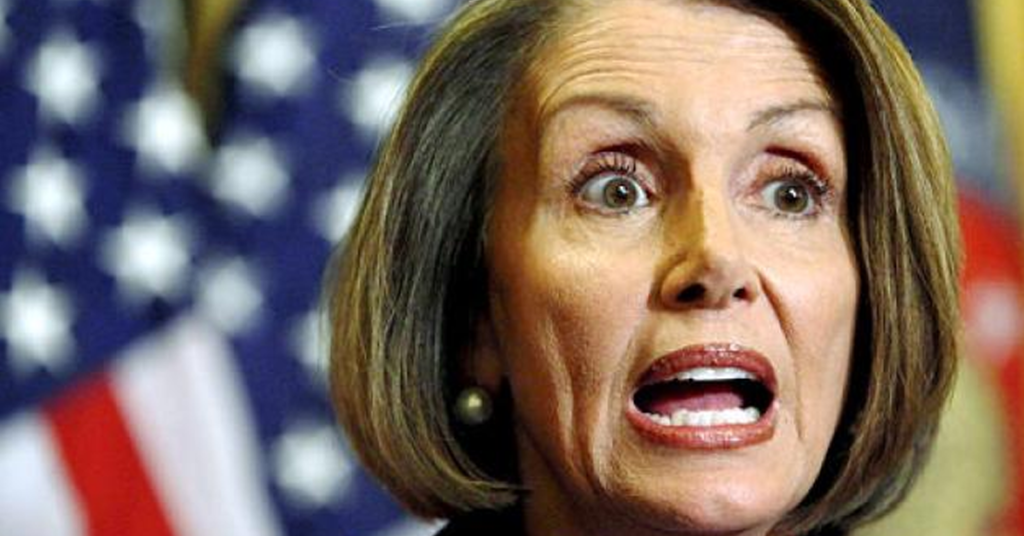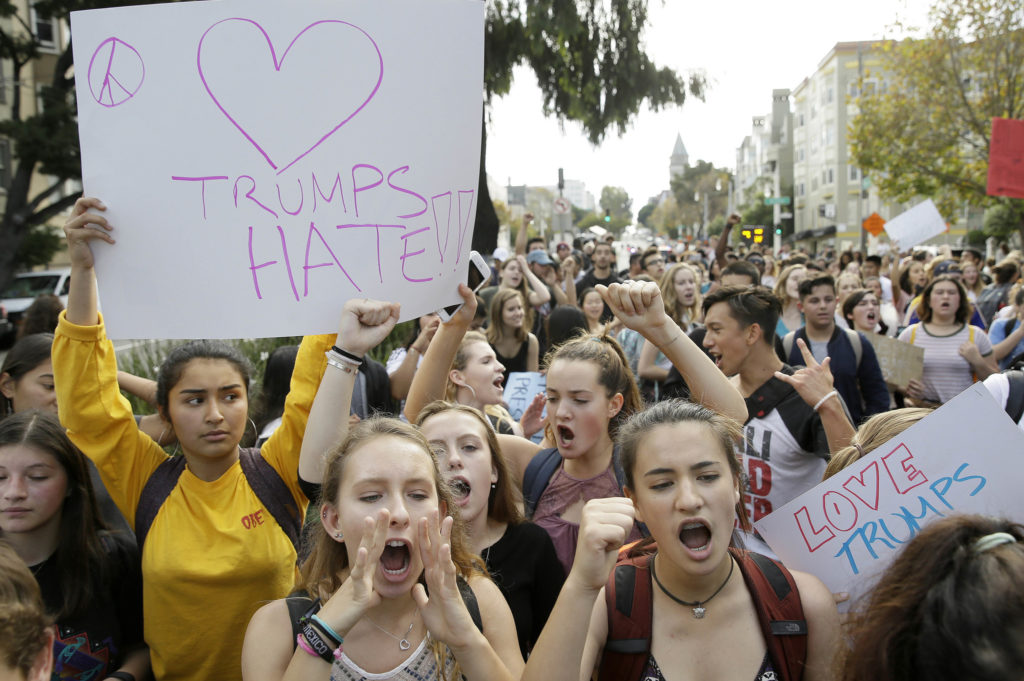Alabama Environmental Director to Donald Trump: Rein in Barack Obama’s EPA

Alabama’s top environmental official is urging President-Elect Donald Trump to rein in President Barack Obama‘s environment regulations. Lance LeFleur, Director of the Alabama Department of Environmental Management, co-signed a letter last week with environmental leaders from four states — Nebraska, North Carolina, North Dakota and West Virginia — urging Trump a to rein in the Environmental Protection Agency in order to “move America forward.” The letter requests the Trump transition team to consider four things: Return environmental leadership to the states. Place a moratorium on currently proposed and new federal regulations. Work with state governors and environmental directors to eliminate federal overreach. End secret policy-making by Washington insiders. On the campaign trail, Trump pledged to “dismantle” the EPA. “We’re going to have little tidbits left but we’re going to get most of it out,” he said at one point. “Environmental Protection, what they do is a disgrace,” he said at another. His statements have not gone unnoticed by the letter’s environmental leaders. “Statements you made during the campaign give us confidence that we can achieve your goals by working together, as these are goals that are also important to the citizens of our states.” Read the full letter to Trump below:
House Republicans to Barack Obama: Take no more action on Iran

House Republican leaders are urging President Barack Obama to take no more action on Iran that could reinforce the nuclear deal before he leaves office. House Speaker Paul Ryan, Majority Leader Kevin McCarthy and Foreign Affairs Committee Chairman Ed Royce are issuing the request in a letter to Obama dated Tuesday. The Republicans say they expect to pass a bill soon extending Iran sanctions. They say signing it should be Obama’s only further step on Iran. The leaders say Obama shouldn’t waive sanctions, grant new commerce licenses or issue new guidance to companies about doing business legally in Iran. The leaders say President-elect Donald Trump deserves the chance to assess U.S. policy toward Iran without Obama making it more complicated. The White House had no immediate response to the letter. Republished with permission of the Associated Press.
Donald Trump victory brings ‘alt-right’ into full view

Donald Trump‘s election is bringing to the fore a strain of race-based politics once so far out of the mainstream few had even heard of it. With an ideology that’s a mix of racism, white nationalism and old-fashioned populism, the “alt-right” has burst into the collective consciousness since members showed up at the Republican National Convention to celebrate Trump’s nomination last summer. When one of its leaders, Richard Spencer, gave a speech in Washington last Saturday at an alt-right conference attended by a couple of hundred people, The Atlantic was there with a video camera that captured the Nazi-style salutes of people in his audience. “Hail Trump, hail our people, hail victory!” Spencer said to cheers that were shown in video snippets that have since been viewed hundreds of thousands of times online. What does Spencer mean by “our people”? Whites. Spencer directs the National Policy Institute, which describes itself as “dedicated to the heritage, identity and future of people of European descent in the United States and around the world.” It is Spencer who is widely credited with coming up with the term “alt-right,” or “alternative-right,” about eight years go. While members of the movement are getting more attention than ever, the head of the Anti-Defamation League’s Center on Extremism said Tuesday there is not much new in its message. “The hatred and bigotry that is at the core of alt-right ideology has not changed,” center director Oren Segal said in an interview conducted by private messaging. “What has changed is the name, their packaging and the stated belief that they have a champion in the highest office.” Richard Cohen, president of the Alabama-based Southern Poverty Law Center, an organization that tracks hate groups, said the alt-right is “a rebranding of white nationalism.” Cohen called it “the energy behind the avalanche of racist and anti-Semitic harassment that plagued social media platforms for the entire presidential campaign.” Cohen’s comments came in a statement about Trump’s decision to fill his chief strategist slot with Steve Bannon, who formerly ran Breitbart News, a website popular with members of the alt-right. Indeed, much of the alt-right exists online only, for all practical purposes. While the Ku Klux Klan or neo-Nazis might have public rallies, people associated with the alt-right are more likely to spread their beliefs in online forums or on social media like Twitter. They tend more toward memes than marches; subjects can include criticism of Jews and claims that white Americans are under attack by minority groups. Trump aides and advisers have tried to distance him from the beliefs of the alt-right. In a meeting Tuesday with editors and reporters of The New York Times, Trump said of the alt-right: “I don’t want to energize the group, and I disavow the group.” But members of the alt-right, including Spencer, are vocal in their support of the Republican president-elect. In an interview with The Associated Press in Cleveland, where members of the alt-right obtained credentials to attend the Republican National Convention, Spencer painted himself and Trump as people who think alike. “Do you think it’s a coincidence that everybody like me loves Trump and supports him?” he said. Republished with permission of the Associated Press.
Senate trade-off: More Barack Obama judges, Donald Trump gets nominees

Republicans are gleeful over Democratic-engineered rule changes that will make it easier for President-elect Donald Trump to get his Cabinet nominees through the Senate. Yet Democrats see a lasting upside from what they did: allowing President Barack Obama to shape the federal judiciary for years to come. Democrats in 2013 scaled back the power of the Senate minority to throw roadblocks in front of a president’s nominees. In the years that followed, the Senate confirmed almost 100 federal judges nominated by Obama, bringing to 329 the number of judicial nominees confirmed during Obama’s term in office. The impact of those lifetime appointments will be especially felt on the federal appeals court in Washington, often called the second most important court after the Supreme Court because it hears many cases on environmental and other regulations. Judges picked by Republican presidents had dominated the court, but now Democratic appointees hold a 7-4 advantage. Obama has put four judges there, including three after the rules changes. Outgoing Senate Democratic leader Harry Reid engineered the changes, dubbed the “nuclear option” because of the intensity they could add to partisanship, after Republicans blocked many of Obama’s nominees. Even with a Republican majority in the Senate, the Nevada Democrat says he would do it again. “The nuclear option lets presidents show their true colors and guarantees a nominee a fair up-or-down vote,” Reid said in a statement this week. “If Republicans want to go on record supporting radicals, that’s their decision and they will have to live with it.” Nan Aron, the president of the liberal judicial advocacy group Alliance for Justice, says that if the rules hadn’t been changed, Trump would now be filling seats on the D.C. circuit and other courts. “They will undoubtedly hear challenges to Trump’s regulatory agenda, challenges to executive orders,” Aron said. In November 2013, the rules changes reduced the number of votes needed to end filibusters, or procedural roadblocks, on nominations from 60 to a simple majority, usually 51. Republicans are on track to hold 52 seats next year, meaning they won’t need any Democratic votes to confirm the new Cabinet – or confirm federal judges whom Trump himself is expected to nominate. At the time of the changes, Republican leader Mitch McConnell warned Democrats that the strategy could backfire. “I say to my friends on the other side of the aisle, you will regret this, and you may regret it a lot sooner than you think,” McConnell said on the Senate floor. Sen. Chuck Schumer, the New York Democrat who will replace Reid as minority leader, says the pressure will now be on Republicans, “many of whom had serious qualms with the (presidential) campaign that was run, to determine whether these nominees will be fit to lead these agencies.” Still, Democrats will feel the consequences if they seriously oppose any of Trump’s nominees. When he chose Alabama Sen. Jeff Sessions to be attorney general last week, some Democrats expressed immediate concern. Vermont Sen. Patrick Leahy said that he disagreed with Sessions “particularly on civil rights, voting rights, immigration and criminal justice issues.” For Trump’s nominees to run into trouble, they will have to anger fellow Republicans. That may be the case for his nominee for CIA director, Kansas Rep. Mike Pompeo. Pompeo has rejected accusations that U.S. intelligence and military personnel were “torturers” for harshly interrogating terror suspects captured after 9/11, saying they were “patriots.” Republican Sen. Rand Paul of Kentucky said on CBS’s “Face the Nation” last Sunday that he wants to know more about Pompeo’s views on torture and also whether he supports expanding powers of the National Security Agency. “He’s going to have to also answer, to my liking, whether or not he’s still for torture, whether or not he’s for waterboarding,” Paul said. “That’s important.” Democrats will still have the power to filibuster one nomination – whomever Trump chooses to replace the late Supreme Court Justice Antonin Scalia. McConnell said last week that he wouldn’t anticipate yet that Democrats would try to block Trump’s nominee “or what we might do in reaction to that.” Republished with permission of the Associated Press.
Donald Trump’s charity admits violating IRS’ self-dealing ban

President-elect Donald Trump‘s charity has admitted that it violated IRS regulations barring it from using its money or assets to benefit Trump, his family, his companies or substantial contributors to the foundation. According to a 2015 tax return posted on the nonprofit monitoring website GuideStar, the Donald J. Trump Foundation acknowledged that it used money or assets in violation of the regulations not only during 2015, but in prior years. The tax filing, first reported Tuesday by The Washington Post, doesn’t provide details on the violations. The filing’s release comes as the New York attorney general’s office investigates whether Trump personally benefited from the foundation’s spending, including several purchases detailed in reports by The Post. Questions sent via email to Trump’s transition team weren’t immediately answered Tuesday. The foundation’s admission in the tax filing isn’t the first time it has run afoul of laws and regulations governing charitable organizations. In October, the office of New York Attorney General Eric Schneiderman, a Democrat, ordered the foundation to stop soliciting donations after it was discovered that the charity had been accepting outside contributions without the proper New York state registration. The foundation also gave an improper $25,000 check to a political committee supporting Florida Attorney General Pam Bondi in 2013. Charities are barred from engaging in political activities, and the president-elect’s staff says the check he signed was mistakenly issued following a series of inexplicable clerical errors. Earlier this year, the Trump Foundation paid a $2,500 fine to the IRS over the check. Trump had intended to use personal funds to support Bondi’s re-election, his campaign said. At the time, Bondi’s office was fielding media questions about whether she would follow the lead of Schneiderman, who had filed a lawsuit against Trump University and Trump Institute. Scores of former students say they were scammed by Trump’s namesake get-rich-quick seminars in real estate. Bondi, who the AP reported in June personally solicited the $25,000 check from Trump, took no action against Trump University. Trump last week settled three lawsuits over Trump University days before the scheduled start of a fraud trial in California, agreeing to pay out $25 million with no admission of wrongdoing. Bondi, meanwhile, met with Trump in Manhattan last week and appears to be under consideration for an appointment in the Trump administration. Republished with permission of the Associated Press.
Kellyanne Conway: Donald Trump not interested in further Hillary Clinton email probe

President-elect Donald Trump “doesn’t wish to pursue” further investigations into Hillary Clinton‘s email practices, a top adviser said Tuesday, a turnaround from all the campaign rallies when Trump roused supporters to chants of “lock her up.” “I think Hillary Clinton still has to face the fact that a majority of Americans don’t find her to be honest or trustworthy, but if Donald Trump can help her heal then perhaps that’s a good thing,” Kellyanne Conway said on MSNBC’s “Morning Joe.” That comes after months of Trump nicknaming his Democratic rival “Crooked Hillary,” questioning whether the Clinton Foundation is a pay-for-play scheme and raging against the Justice Department for refusing to prosecute her for blending private and official business on her homebrew email server. He told her face-to-face at a presidential debate that if he won the presidency, she’d “be in jail.” Conway’s comments were striking because Justice Department investigations are historically conducted without the influence or input of the White House. Presidents do not dictate decisions on which criminal investigations are pursued or their outcome. The disparity between Trump’s taunts on the campaign trail and his approach now, Conway suggested, is part of a purposeful shift away from at least the tone, if not the substance, of his past rhetoric. “I think he’s thinking of many different things as he prepares to become the president of the United States and things that sound like the campaign aren’t among them,” she said. Trump himself has appeared to waver on whether he would want to seek further probes into possible wrongdoing by the Clintons. “I’m going to think about it,” he said in a “60 Minutes” interview, his first sit-down interview after the Nov. 8 election. “I feel that I want to focus on jobs, I want to focus on health care, I want to focus on the border and immigration and doing a really great immigration bill. We want to have a great immigration bill. And I want to focus on – all of these other things that we’ve been talking about.” Trump said in that interview that Clinton “did some bad things,” but ultimately the Clintons are “good people” and “I don’t want to hurt them.” Conway’s comments came as Trump abruptly canceled a meeting with The New York Times on Tuesday, accusing the organization of changing the conditions for the session “at the last moment.” The newspaper denied this and said Trump’s aides tried to change the rules. But Hope Hicks, speaking for Trump, said later the meeting was back on and he’d be “going to The New York Times” later Tuesday. Trump met privately Monday with representatives of the television networks. The president-elect heralded “more great meetings” in his Manhattan tower as he continues shaping his administration before heading to Florida for Thanksgiving on Tuesday. Republished with permission of the Associated Press.
Robert Bentley encourages support of Alabama small businesses on Saturday

Tis the season for holiday shopping. From Black Friday to Cyber Monday, retailers across the country are geared up for the busiest shopping weekend of the year. And this year, Governor Robert Bentley is encouraging Alabamians to shop local to support Small Business Saturday. On Monday, Bentley signed a proclamation formally declaring November 26th as Small Business Saturday in Alabama. Already a national initiative, Small Business Saturday is designed to celebrate and support the often-overlooked sector of the economy, encouraging consumers to patronize small, local, brick-and-mortar stores. “Small Business Saturday is a great opportunity for Alabamians to support local businesses on the first Saturday after Thanksgiving,” Bentley said. “Small businesses are the engines of job growth and a vital part of a stimulated economy. By recognizing Small Business Saturday, we can choose to support the small businesses that contribute to our economy and our communities. As we begin the holiday shopping season, I encourage Alabamians to shop at local small businesses throughout Alabama.” According to the latest state profile from the U.S. Small Business Administration, there are 382,524 small businesses in Alabama, accounting for 96.7% of Alabama businesses. Small businesses employ 47.7% of the state’s private sector workforce. “Small business represents 99.7 percent of all U.S. employers, and they provide jobs for 58 million Americans,” Rosemary Elebash, State Director for the National Federation of Independent Business chairs theAlabama Small Business Commission and Advisory Committee said. “For many local retail businesses, the holiday shopping season is a make-or-break time, and Americans who want to support their communities and the economy should remember to shop small.”
Donald Trump aide suggests he wants no Hillary Clinton probe

The Latest on Donald Trump’s transition to the presidency (all times local): 8:45 a.m. – A top adviser to Donald Trump is suggesting that the president-elect is going to help Hillary Clinton “heal” and not pursue a probe of her private email server. Kellyanne Conway said on MSNBC on Tuesday that Trump is setting a tone for congressional Republicans by refraining from calling for more investigations. She says that “he doesn’t wish to pursue these charges.” Days earlier, Trump told CBS’s “60 Minutes” that he wants to think about whether to look more into Clinton’s homebrew email server and the Justice Department’s decision to not recommend charges against her. Now Conway says that, “if Donald Trump can help her heal, then perhaps that’s a good thing.” Trump during the campaign vowed to put his Democratic presidential rival “in jail” over the matter. 8:30 a.m. – President-elect Donald Trump has abruptly canceled a meeting with The New York Times. He accused the organization of changing the conditions for the session “at the last moment.” The newspaper denied the charge and said Trump’s aides tried to change the rules. He’d been scheduled to meet Times reporters, editors and columnists and did not give details of his complaint, saying in a morning tweet only that “the terms and conditions of the meeting were changed at the last moment. Not nice.” Eileen M. Murphy, the newspaper’s senior vice president for communications, said the paper “did not change the ground rules at all.” She said Trump’s aides asked for a private meeting only, with nothing on the record, after having agreed to a meeting that would consist of a small off-the-record session and a larger on-the-record one with reporters and columnists. Republished with permission of the Associated Press.
Americans who live near border say Donald Trump’s wall is unwelcome

All along the winding Rio Grande, the people who live in this bustling, fertile region where the U.S. border meets the Gulf of Mexico never quite understood how Donald Trump‘s great wall could ever be much more than campaign rhetoric. Erecting a concrete barrier across the entire 1,954-mile frontier with Mexico, they know, collides head-on with multiple realities: the geology of the river valley, fierce local resistance and the immense cost. An electronically fortified “virtual wall” with surveillance technology that includes night-and-day video cameras, tethered observation balloons and high-flying drones makes a lot more sense to people here. It’s already in wide use and expanding. If a 30- to 40-foot concrete wall is a panacea for illegal immigration, as Trump insisted during the campaign, the locals are not convinced. And few were surprised when the president-elect seemed to soften his position five days after the election, saying that the wall could include some fencing. “The wall is not going to stop anyone,” said Jorge Garcia, who expected to lose access to most of his 30-acre riverside ranch after the U.S. Border Fence Act was enacted a decade ago. Under the law, 652 miles of border barrier were built, mostly in Arizona. The 110 miles of fences and fortified levees that went up in Texas are not contiguous but broken lines, some as much as a mile and a half from the river. Eight years after government surveyors marked Garcia’s land, he and his wife, Aleida, are still waiting to see if the Border Patrol will sever their property. “This lets me know that whenever they want to build the wall, they can,” said Aleida, holding up a tax bill that shows the nominally expropriated sliver of property. If a fence or wall goes up, the couple will be paid $8,300. So far, the Garcias and the rest of the village of Los Ebanos have been spared because the erosion-prone clay soil is simply too unstable, she believes. Geology conspires against wall-building up and down the Rio Grande Valley. So does a boundary water treaty with Mexico and endangered-species laws. Catwalks and tunnels had to be built into existing fences to accommodate endangered ocelots and jaguarundi, two species of wild cat. The gaps in the border barrier include an entire flank of the River Bend golf club and resort in Brownsville. University of Texas-Rio Grande Valley political scientist Terence Garrett calls them “gaps of privilege” because many landowners were politically connected. Other landowners fought the Border Patrol in court. “The wall might make mid-America feel safer, but for those of us that live on the border, it’s not making us feel any safer when we know that people can go over it, around it, under it and through it,” said Monica Weisberg-Stewart, security expert for the Texas Border Coalition, a consortium of regional leaders. The coalition wants federal dollars to go instead to bolstering security at border crossings, where heroin, cocaine and methamphetamine are smuggled in. A poll conducted in Southwest border cities in May found 72 percent of residents opposed to building a wall. The Cronkite News-Univision-Dallas Morning News poll had a margin of error of 2.6 percentage points. The wall is popular in distant cities “because you can see, feel and touch it. But politically it just doesn’t make sense,” said J.D. Salinas, the coalition’s chairman. As commissioner of the border county of Hidalgo from 2007 to 2009, Salinas won public backing for 20 miles of border barrier by reinforcing an existing levee with concrete and topping it with a fence. In 2010, the project paid off. The levee held back flooding from Hurricane Alex. The cost was about $10 million a mile, though. In the Nov. 8 election, only three Texas border counties – all sparsely populated – went for Trump. The rest are solidly Democratic, at odds with the Republicans who control most state capitals and have been demanding more border barriers. Rural ranchers worried about drug traffickers and other criminals are less likely to benefit from border walls and fences than city-dwellers, said Adam Isacson, a security expert with the nonprofit advocacy group Washington Office on Latin America. “What a wall ultimately does is slow a border crosser for 10 to 15 minutes,” Isacson said. “In an urban area, that 15 minutes is crucial.” Border patrol agents can arrive quickly. In rural areas, they may be an hour or more away. The U.S. side of the border is quite safe, said Weisberg-Stewart. “We are not in a war zone.” In fact, cross-border trade has been booming. In 2014, more than $246 billion worth of goods and 3.7 million trucks crossed the Texas-Mexico border, according to coalition figures. Trump needs to remember that Mexico is the second-largest U.S. export market, said Rep. Filemon Vela, a Texas Democrat whose district includes most of the valley. Only Canada buys more American goods. “There’s no way in hell he’s going to see his great wall,” Vela said. The region bears the usual hallmarks of American prosperity: strip malls, well-maintained interstates, prosperous gated communities with hacienda-style McMansions. Cold-storage warehouses proliferate for northbound Mexican okra, avocados and tomatoes while other warehouses brim with southbound used clothing. Cotton, grapefruit and corn fields abound. Much of the Mexican side of the border has been afflicted by drug cartel-related violence, but crime in the Rio Grande Valley, which is home to 1.3 million people, has been consistently lower than other Texas cities. If lots of “bad hombres” are crossing the border, as Trump has claimed, they are mostly taking their lawbreaking elsewhere. Further, there’s no record of anyone sneaking across the border to commit acts of terrorism. The Border Patrol’s buildup after 9/11 is one reason, argues David Aguilar, who was named to the agency’s top job in 2004 by a fellow Texan, then-President George W. Bush, and is now a private consultant. Since then, the number of agents has climbed from 9,500 on the southwest border to 17,500 in 2015. Meanwhile, the number
Daniel Sutter: Working for a living

Americans have traditionally worked hard, logging longer work weeks and taking shorter vacations than Europeans. Yet two changes in the labor market suggest that our work ethic may be dissolving. The changes are ominous because working for a living is the core of our modern prosperity. The labor force participation rate provides insight on the labor market. A person participates in the labor market if they are employed, or if not employed and actively seeking work. Not everyone of working age wishes to work (e.g., retirees, full time students), so the definition must account for this. Labor force participation stood at 66% in January 2008 and fell to 63% during the Great Recession. Participation typically falls during recessions as some people who lose their jobs become discouraged and stop looking for work. They then temporarily drop out of the labor market. The unemployment rate is now below 5% and the number of persons employed has increased by 13 million, but the labor force participation rate has remained at 63%. Three percentage points might seem small, but this translates into 8 million persons not in the work force today, which equals the number of Americans currently unemployed. In addition, the work participation of men aged 25 to 54 has been declining for decades. In 1954, 98% of men in this age group were in the labor force, compared with 88% today. These are the years of peak earnings, when people should be paying off mortgages and saving for retirement. Economists do not really understand the causes of these labor force participation declines. The President’s Council of Economic Advisors (CEA) could not conclusively identify drivers of the male participation rate decline. The number of Americans on disability has increased sharply in the past 15 years, but the trend predates the rising tide of disability. Generous welfare programs may have diminished work incentives in the 1970s and 1980s, but 1996’s welfare reform significantly tightened eligibility for men. The participation decline may be related to high rates of incarceration; the CEA notes that almost 7% of males aged 25-54 in 2008 had been incarcerated at some point. Time behind bars dramatically impairs employment prospects. Factors which might drive the post-2008 labor force participation decline would only produce a gradual shift. For example, increased graduate school enrollment and more adult children living with their parents should only slowly adjust the rate. Perhaps the 2008 recession provoked the exit of many who were ready to permanently leave the labor force. Our economy must produce the goods and services for our high standard of living. A prosperous economy must reward production. The market economy does this through property rights and voluntary exchange. Goods are owned by the producers until sold. Work is the main source of income for most Americans. Because the division of labor today is so extensive, very few people produce something of value by themselves; we just make a small contribution. Nonetheless, the work is valuable enough to earn a living. This process works so well that today we take it for granted. But humans have been dirt poor throughout most of recorded history. A sustained increase in the average person’s standard of living only began around 1700 with the emergence of the market economy. People’s willingness to work for a living forms the bedrock of prosperity. Today we are wealthy enough to support people who do not contribute. This can be done through help from family and friends, or assistance can also come from government transfer programs. Much of this reflects our compassion, and we can afford this within limits. A market economy leaves people free to choose how much they wish to work, that is, to balance their standard of living and quality of life as they choose. A decline in labor force participation consequently is not necessarily bad. But a decline with few clear causes may indicate a dissipating work ethic. Our wealth may undermine the connection between work and consumption which makes prosperity possible. ••• Daniel Sutter is the Charles G. Koch Professor of Economics with the Manuel H. Johnson Center for Political Economy at Troy University and host of Econversations on TrojanVision. The opinions expressed in this column are the author’s and do not necessarily reflect the views of Troy University.
Nancy Pelosi promises more influence for junior Democrats

Nancy Pelosi is responding to a challenge to her position as top House Democrat by proposing to give more influence to junior lawmakers atop congressional committees and within her leadership team. Pelosi, 76, has been the chamber’s Democratic leader since 2002. She is being challenged by Ohio Rep. Tim Ryan in the aftermath of elections that were disappointing for Democrats who expected Hillary Clinton to be elected president and their party to make sizable gains in the House. Pelosi appears to be addressing widespread unease among more junior lawmakers who say that opportunities to advance and influence the party’s course are lacking so long as the same senior Democrats remain in charge. Ryan says he is better able to appeal to Rust Belt and rural areas where Democrats used to perform better. Pelosi points to her successful leadership in the mid-2000s that led the party into the majority for four years. Pelosi’s core leadership team has been in place for a decade and octogenarians command the top Democratic posts of several powerful committees, including the Judiciary panel and the powerful Ways and Means Committee, which has sweeping jurisdiction over taxes, trade, health care and Social Security. Pelosi is the overwhelming favorite to defeat Ryan and hold onto her post as minority leader. But she’s responding to the unease among junior Democrats by proposing that less senior lawmakers be given the No. 2 spots on committees. She would also immediately create three leadership positions for Democrats who have served fewer than 10 years, and designate the No. 3 leadership post for a lawmaker who has served fewer than three terms. “Making this fight requires all hands on deck,” Pelosi wrote to fellow Democrats. Ryan, 43, had earlier issued similar proposals designed to give a greater role to more junior Democrats. And he says the party has to expand far beyond its coastal and urban strongholds. “I’m pulling the fire alarm because the house is burning down, and we better get our act together or we’re going to cease being a national party,” Ryan said Monday on the Fox Business Network. “We’re going to be a regional party that fails to get into the majority and fails to do things on behalf of those working class people that were the backbone of the Democratic Party for so long.” Republished with permission of the Associated Press.
Donald Trump drives teens to demonstrate though they can’t vote

A high school senior, Yaocihuatl Reyes didn’t pay much attention to the presidential race until she found her teacher sobbing and her east Los Angeles classmates terrified that the election of Donald Trump would lead to the deportation of their families. At that moment, the 17-year-old daughter of a nurse and security guard with little political upbringing said she felt driven to act. She and a friend asked students from nearby high schools in the predominantly Latino neighborhood to meet at a park, where they decided to lead a walkout. They made signs, wrote chants and mapped routes for the march to City Hall days later. Hundreds took part. “We just wanted to go and tell our community that we’re here for them, we’re scared, too, but we’re not going to give up,” said Reyes, whose family is in the U.S. legally. “This walkout was kind of for unity, to unify each other.” Though too young to vote, thousands of high school students from Seattle to Silver Spring, Maryland, have taken to the streets since Trump’s election to protest his proposed crackdown on illegal immigration and his rude comments about women. It is an unusual show of political involvement on the part of young people. And experts say that kind of engagement can lead to increased activism when they are adults. “The election has really promoted a feeling on the part of many people that just staying silent is being complicit, and so we’re seeing a huge uptick in engagement,” said Jennifer Earl, a professor of sociology at the University of Arizona who researches the internet and social movements. On the other side of the political divide, students have also rallied in support of Trump, though in smaller numbers. The so-called millennial generation – the youngest adult generation – is the most racially and ethnically diverse in the country now, according to the Washington-based Pew Research Center. Nearly half of millennials identify themselves as political independents, more than in prior generations, according to Pew. Young people who are politically active and concerned about issues are more likely to vote once they turn 18, said Joseph Kahne, professor of educational policy and politics at the University of California, Riverside. Many teens are using social media to spread the word about demonstrations. The best predictor of whether a young person attends a protest is whether he or she is asked to go, Kahne said. Reyes said she had never even attended a political event until earlier this year, when she asked her mother to take her to a rally for Democratic Sen. Bernie Sanders. Oregon teen Cole Sandlin said he, too, had never attended a political rally before organizing one at his high school. He and a friend ordered flags online to support Trump, affixed them to their trucks and gathered in the parking lot before class on Election Day. The rally drew about 30 students. “We thought, this is basically our first election that we’re involved in, that we ought to do something to show our political views,” said Sandlin, who turned 18 shortly after the election and likes Trump’s promises to revamp health care and trade. Sandlin said he has long been interested in politics and grew up watching the news with his father, a farmer in Silverton, Oregon. He said he plans to work on the farm after graduation but will keep up on political issues. “If there was something I felt compelled to share my opinion, I wouldn’t have a problem doing that,” he said. Nor would Reyes, who plans to attend college next year and major in political science, inspired by Sanders’ campaign. She said also wants to organize a community rally in east Los Angeles with speakers on topics such as criminal justice reform. “It was kind of bizarre. I didn’t think people would come,” she said of the walkout. “I just kept telling my friends, ‘Wow, we actually did this. People actually came. It worked.’” Republished with permission of the Associated Press.


